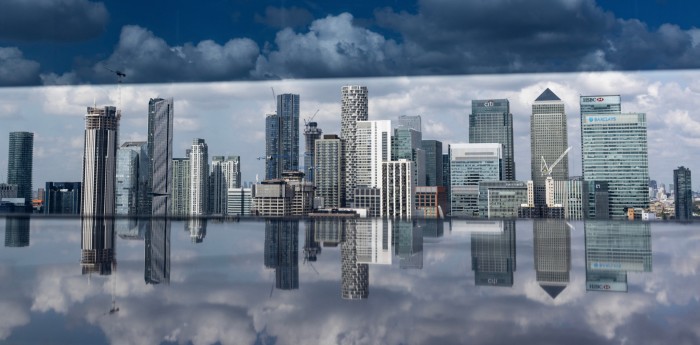Receive free Architecture updates
We’ll send you one myFT Daily Digest latest roundup email Architecture news every morning.
The author is an architectural critic of FT
The Isle of Dogs is never an island but rather a peninsula, even though it often feels like one. It was suitable for the detached London wharves, warehouse towns and isolated wharves filled with precious cargo. A place with its own culture. Transformed since the 1980s into a glittering, steely global financial island, it still feels detached, rich but dangerous.
HSBC’s decision to vacate their 8 Canada Square Building – nicknamed The Tower of Doom – for an office in the City took Canary Wharf by surprise. The fledgling cluster with a Manhattan-style skyline, designed to replace the languid, striped, class-bound Square Mile, is now struggling.
Canary Wharf is the result of a fusion of Thatcherite politics, Big Bang deregulation, and Michael Heseltine’s experiments with the London Docklands Development Corporation — a turbocharged privatization and development of public lands that are lightly regulated and free of taxes. Canadian developer Olympia & York was persuaded by Thatcher, planning to do for Docklands what they had done for downtown New York with the World Financial Center.
But WFC is only a few minutes walk from Wall Street. Canary Wharf has always been out on its own – it even seems to have its own microclimate with hostile wind tunnels created between the skyscrapers. Actually there are many nearby; The Isle of Dogs has one of the highest density of council housing anywhere in the UK. But in the socially anti-housing Thatcher era, these were the wrong neighbors. Instead of building a connected, contiguous piece of town, Canary Wharf became a privatized, gated, fenced place, a symbol of division.

For a while it worked. Banks were coaxed into new high-rises. Olympia & York imported their favorite architect, César Pelli (tower designer at WFC NYC) for the center of One Canada Square with its distinctive pyramidal crown. SOM, Chicago Modernist, planned and built a North American-style network. Norman Foster, who had designed HSBC’s incredible Hong Kong headquarters, at the time the world’s most expensive building, began work on their London tower, a sleek extrusion. He then built the magnificent Jubilee Line Canary Wharf station, a perfect symbol of arrival, though it often looks empty and uncomfortable now.
The cluster of towers, now so prominent on the skyline, forced the City to transform; the reinvention started by Foster’s Gherkin, now engulfed by a crowd of taller, fatter towers. The precarity of Canary Wharf was underscored by the bankruptcy of Olympia & York in 1992, by the banking crisis of 2008 and again by the pandemic. The new developments are almost all residential, some very nice, like Herzog & de Meuron’s One Park Drive, but most are public. Yet somehow the area still feels monocultural.
In the 2010s as City proper had supplied itself with high-quality office space, workers were drawn back to the pubs and their alleyways, pocket gardens, bars and friendly lunch spots. The reinvention of Shoreditch is the lure while hedgies go “west” to Mayfair to be close to clients and restaurants.
Canary Wharf is renowned for its connectivity — first the Docklands Light Railway, then the Jubilee, then the Elizabeth Line, a £18.9 billion cost that is said to have been the product of lobbying bankers who wanted better Heathrow ties. The problem, though, is inherent in that idea: it’s defined by how easy it is to get in and out again. It was never really part of London, billed as downtown Manhattan but more like La Défense or the original Toronto of Olympia & York, at best.
The future is uncertain. The floor plates of the bank’s tower were too deep to be converted into living quarters and remained isolated. Canary Wharf is an interesting experiment. Now it needs to somehow become part of the host city.
#HSBCs #departure #spelled #doom #isolated #experiment #Canary #Wharf